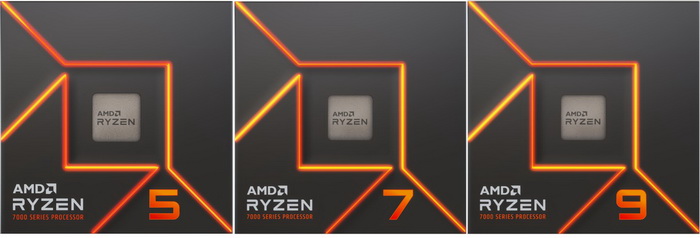INTRODUCTION

Competition between manufacturers is always good thing, not only is it the driving force behind the further advancement of technology but it also results in the production of better products (alas not always in terms of build quality) and at lower final costs for the end consumer. This is especially evident in the PC market and especially in regards to CPUs and GPUs where AMD, Intel and NVIDIA are holding almost the entirety of the market. Both AMD and Intel recently released their latest desktop CPU lines, the Zen 4 (Codename Raphael – reviews here) and 13th gen (Codename Raptor Lake) respectively which offered impressive performance boosts over their previous models. Well, days ago AMD announced the low-TDP line of their latest CPUs which includes the Ryzen 5 7600, Ryzen 7 7700 and Ryzen 9 7900 models all of which ended up on my test bench a couple of weeks back.
For more than 50 years AMD has driven innovation in high-performance computing, graphics and visualization technologies. Billions of people, leading Fortune 500 businesses and cutting-edge scientific research institutions around the world rely on AMD technology daily to improve how they live, work and play. AMD employees are focused on building leadership high-performance and adaptive products that push the boundaries of what is possible.
Once again, the new Ryzen 7000 Series (Zen 4) CPUs are based on the LGA1718 socket and feature an +13% increase in instructions per cycle/clock (IPC) together with an increase of up to 800MHz in core clocks both of which translate to a single core performance boost of up to +29% compared to the previous 5000 Series (Zen 3). Improvement in power consumption is also noticeable since Zen 4 CCDs (Core Complex Dies - 70mm2 size - 6.5 billion transistors) have moved to an 5nm process (6nm for the I/O Die - 122mm2 size - 3.4 billion transistors) resulting in a very appealing 40% average gain in performance-per-watt (AMD Eco Mode also allows you to manually reduce the TDP of the CPU via the BIOS or their Master software). The entire Ryzen 7000 line (Zen 4) also sports integrated RDNA2 graphics which sport 2 compute units, 4 Asynchronous Compute Engines (ACE) and 1 Hardware Scheduler (HWS) with support for both HDMI v2.1 (HFR/48Gbps FRL/DSC/HDR10+/VRR) and DisplayPort v2.0 (Adaptive Sync/DSC/UHBR10/HDR) outputs. Further tweaks have also been made in the infinity fabric technology and so now instead of the 1:1:1 approach (FCLK/UCLK/MCLK) of the previous 5000 Series (Zen 3) the new 7000 Series (Zen 4) uses an auto:1:1 approach meaning that it keeps the memory controller with the RAM at an 1:1 ratio whereas Infinity Fabric is set between 1600-2000MHz. This ensures optimal cooperation between the new Zen 4 CPUs and DDR5 RAM, especially low-latency modules following the EXPO memory certification by AMD (similar to XMP but aside being licence and royalty free it's also optimized for the new Zen 4 CPU line - up to 11% gains in gaming). In regards to the new non-X models AMD has significantly reduced/limited their TDP (while at default/stock clocks) which means that this time over the 6 core Ryzen 5 7600 CPU (5.1GHz max boost clock), the 8 core Ryzen 7 7700 CPU (5.3GHz max boost clock) and the 12 core Ryzen 9 7900 CPU (5.4GHz max boost clock) all have a maximum TDP (thermal design power) of just 65W with a maximum socket power of 88W and a TjMax of 95 degrees Celsius. On top of that the new Ryzen 7000 series CPUs are shipped with AMD's very own Wraith Prism air coolers (RGB models for the Ryzen 7 7700 and Ryzen 9 7900) which should be quite sufficient at default/stock clocks (thus reducing overall cost for the end consumer). So, time to see what the latest 65W TDP Ryzen Series 7000 family brings to the table.

 O-Sense
O-Sense







.png)

